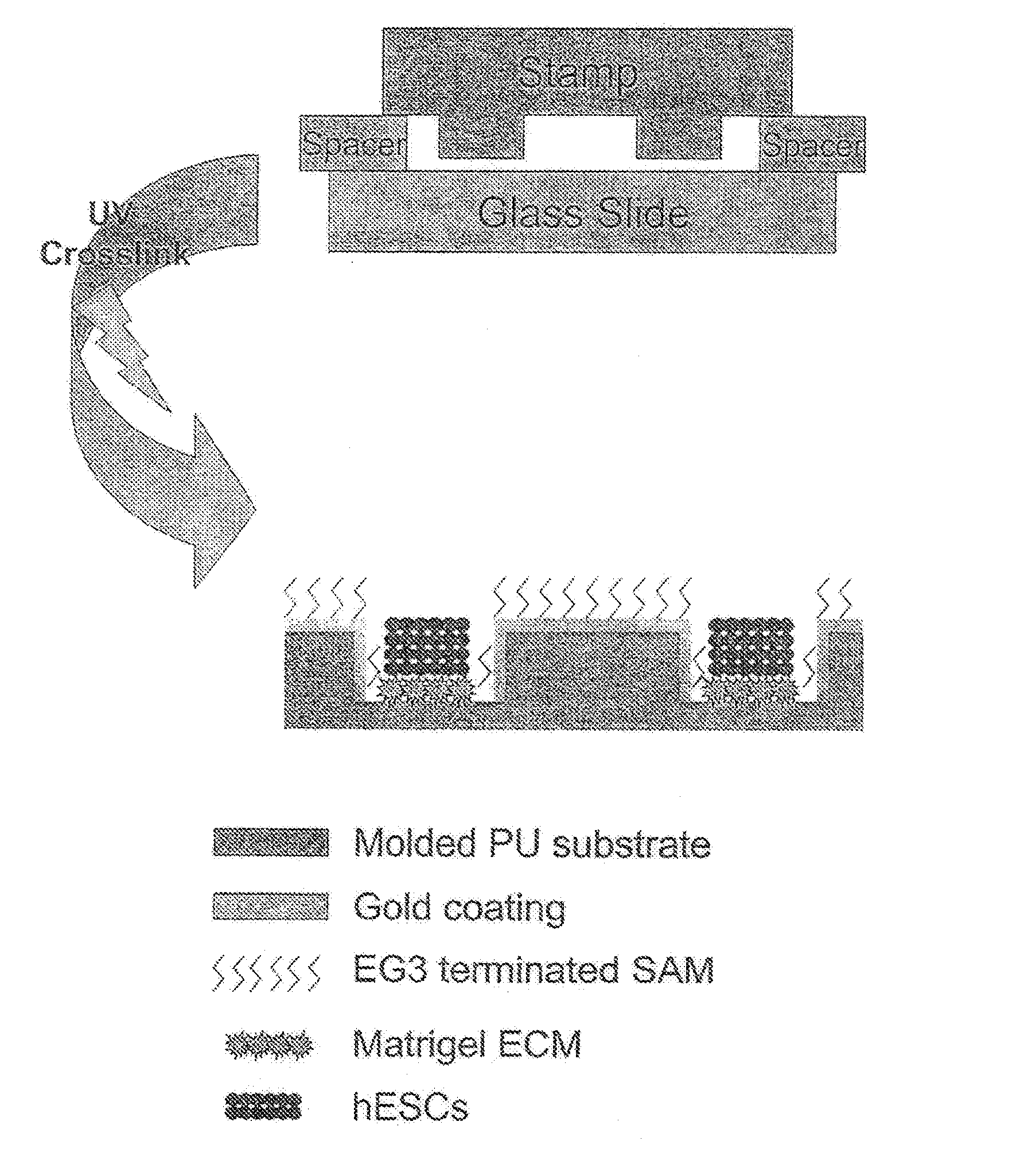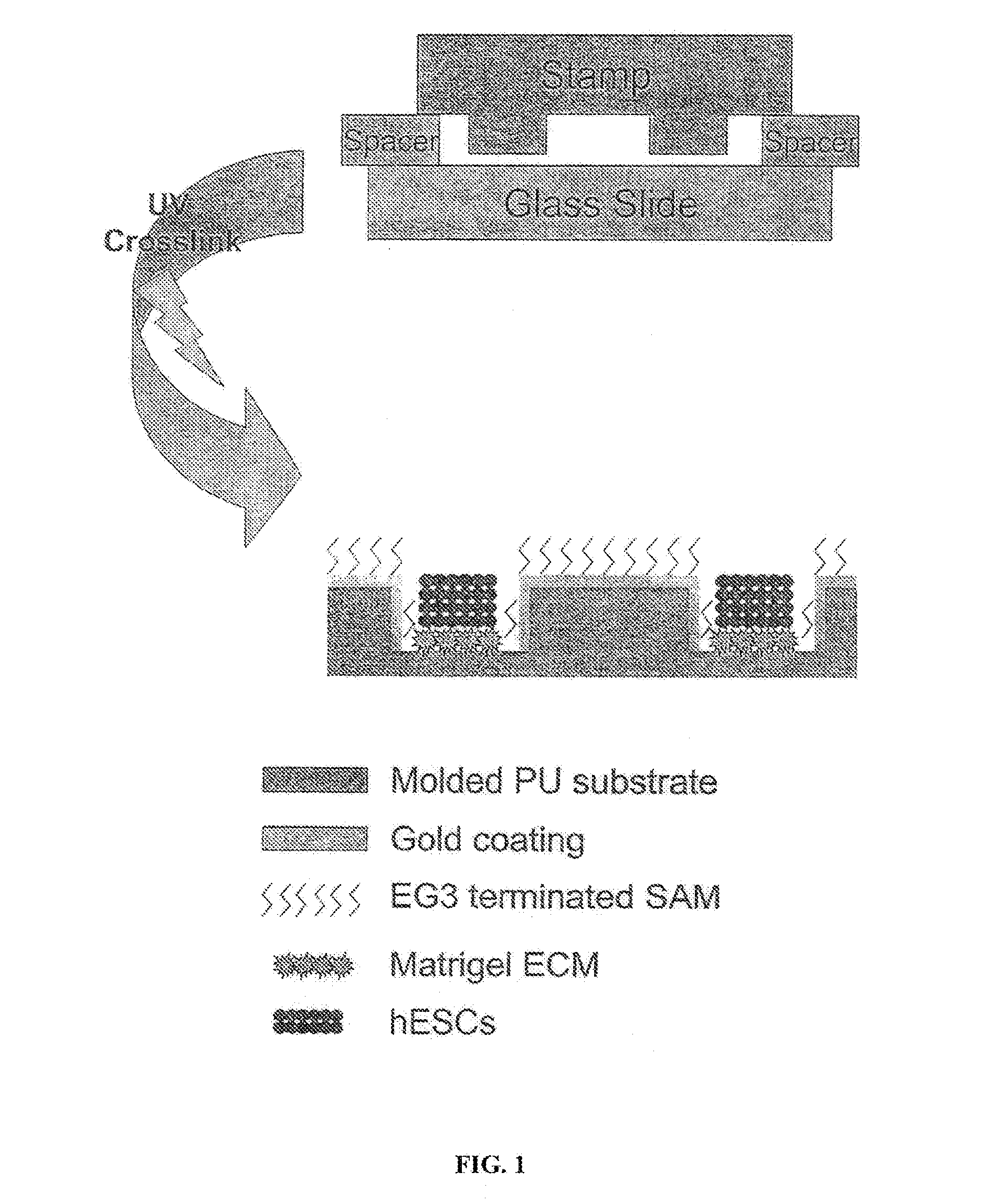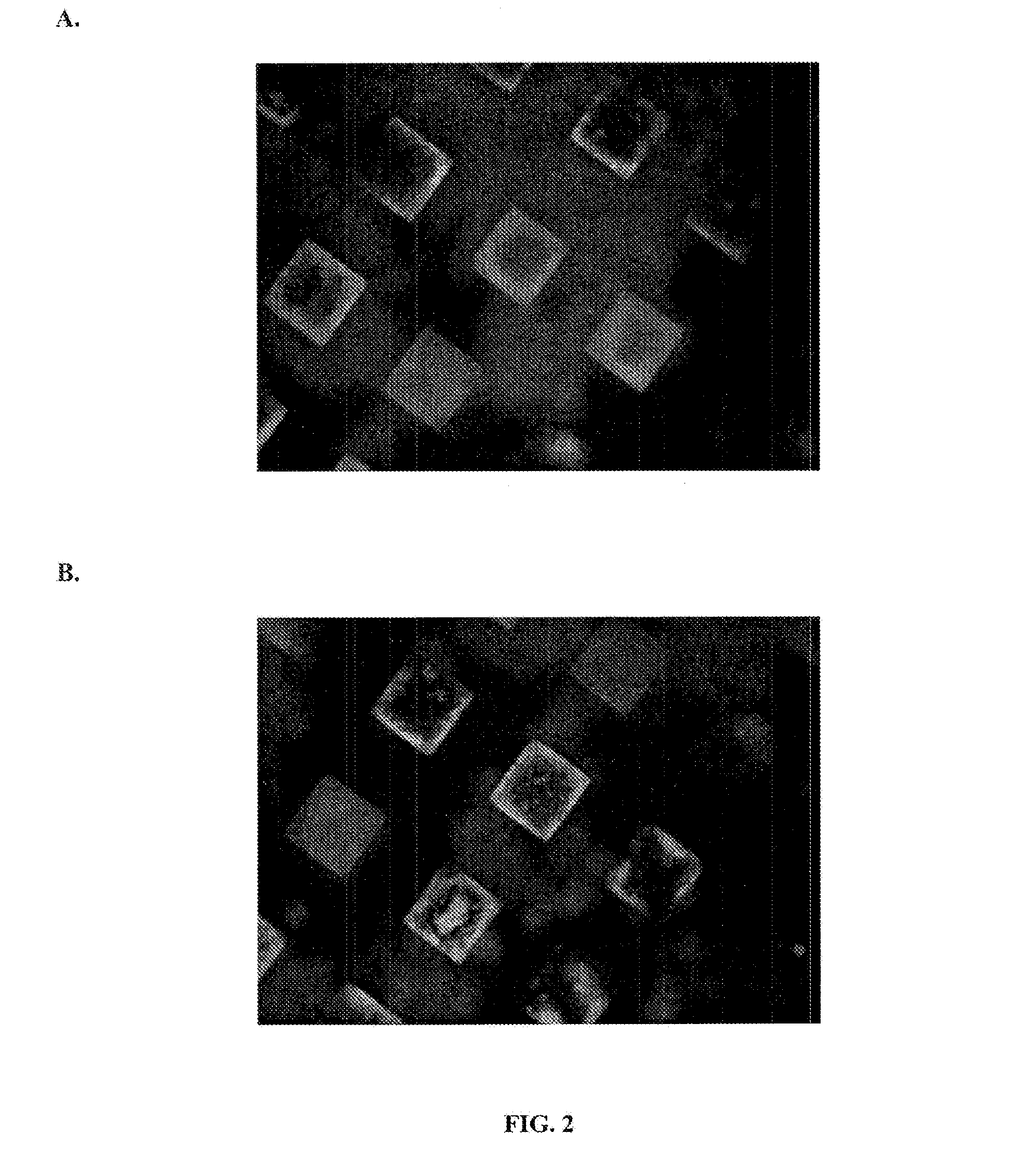Cryopreservation of human embryonic stem cells in microwells
a technology of embryonic stem cells and cryopreservation, which is applied in the direction of biomass after-treatment, specific use of bioreactors/fermenters, biochemistry apparatus and processes, etc., can solve the problems of reducing the viability of cells, reducing the viability of pluripotent stem cells, and imposing resistance to drying, so as to achieve direct positive effect on cell viability
- Summary
- Abstract
- Description
- Claims
- Application Information
AI Technical Summary
Benefits of technology
Problems solved by technology
Method used
Image
Examples
example 1
3-D Microwells for Culturing Embryonic Stem Cells
[0038]Reference is made to FIG. 1. Microscope slides having a homogeneous distribution of wells of identical size and shape were constructed in three steps using a polydimethylsiloxane (PDMS) stamp to shape a surface of a UV-crosslinkable polyurethane polymer matrix.
[0039]First, silicon masters each having desired microwell patterns formed into a surface thereof were prepared using photolithography and plasma etching techniques similar to those used by Chen et al. Chen C, et al., “Using self-assembled monolayers to pattern ECM proteins and cells on substrates,” Methods Mol. Biol. 139:209-219 (2000), incorporated herein by reference as if set forth in its entirety. The surfaces were passivated by fluorination with (tridecafluoro-1,1,2,2,-tetrahydrooctyl)-1-trichlorosilane vapor. Second, a mixture of PDMS elastomer prepolymer with curing agent (10:1) (Sylgard 184 Silicon Elastomer; Dow Corning; Midland, Mich.) was poured over the silico...
example 2
Cryopreservation of Embryonic Stem Cells
[0045]To prepare a Matrigel® plate, a tube of Matrigel® stock (2 mg) was taken directly from storage at −20° C. A Matrigel® pellet was immediately re-suspended in 6 ml ice-cold DMEM / F12. All chunks in the mixture were eliminated by vigorous pipetting. A 1 ml aliquot of the mixture was added to each well of a 6-well plate. The plate was maintained at room temperature for 1 hour or overnight at 4° C. before use.
[0046]To prepare conditioned medium, a flask was coated with 0.1% gelatin solution, 10 ml to a T75 flask. After the flask was coated, it was incubated overnight in a 37° C., humidified incubator with 5% CO2 for 24 hours prior to plating irradiated MEF cells. 15 ml of irradiated MEF cells a concentration of 2.12×105 cells / ml MEF medium (90% DMEM, 10% FBS and 1% MEM non-essential amino acids solution) were added to a T75 flask and incubated overnight. The MEF medium was aspirated away and 20 ml HES medium without bFGF (80% DMEM / F12 medium, ...
example 3
Cryopreservation of Encapsulated hESCs in 3-D Microwells
[0052]3-D microwells were created as described in Example 1 and treated in accord with the method of Example 2. Microwells were treated with Matrigel®, which selectively absorbs to the bottom of the wells. hESCs were seeded at 1-5 ×10−5 cells / micro well and allowed to grow until they filled the microwells. Culture conditions were as described above. Although CM / F+ was changed daily, the cells were not passaged. Prior to freezing, the hESCs were treated as described above in Example 2 to form matrix-colony-matrix constructs (i.e., the microwells were covered with a top layer of Matrigel® and treated with a carbohydrate-based cryopreservation medium, followed by a freezing medium). The hESCs were frozen and stored at −80° C. or in liquid nitrogen.
[0053]hESCs were thawed and then cultured in the microwells or harvested by dispase treatment and either transferred to new microwells or to MEF monolayers or Matrigel®-coated plates. Vi...
PUM
 Login to View More
Login to View More Abstract
Description
Claims
Application Information
 Login to View More
Login to View More - R&D
- Intellectual Property
- Life Sciences
- Materials
- Tech Scout
- Unparalleled Data Quality
- Higher Quality Content
- 60% Fewer Hallucinations
Browse by: Latest US Patents, China's latest patents, Technical Efficacy Thesaurus, Application Domain, Technology Topic, Popular Technical Reports.
© 2025 PatSnap. All rights reserved.Legal|Privacy policy|Modern Slavery Act Transparency Statement|Sitemap|About US| Contact US: help@patsnap.com



